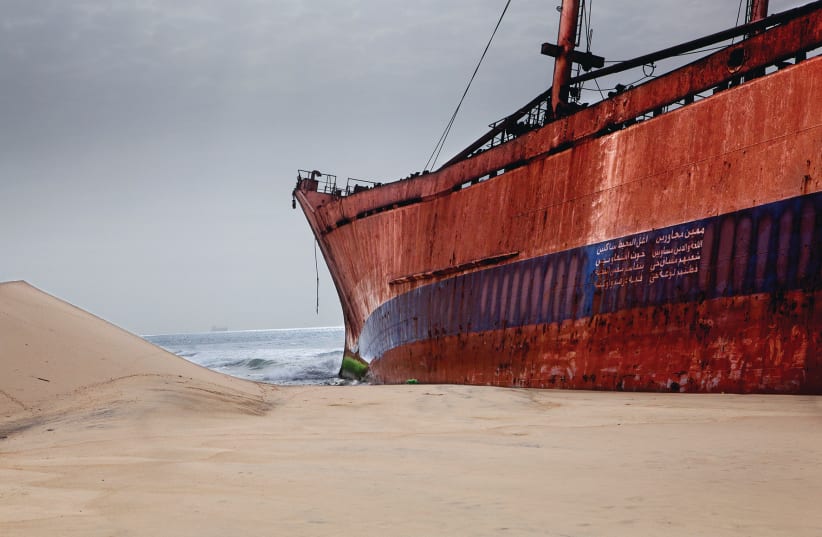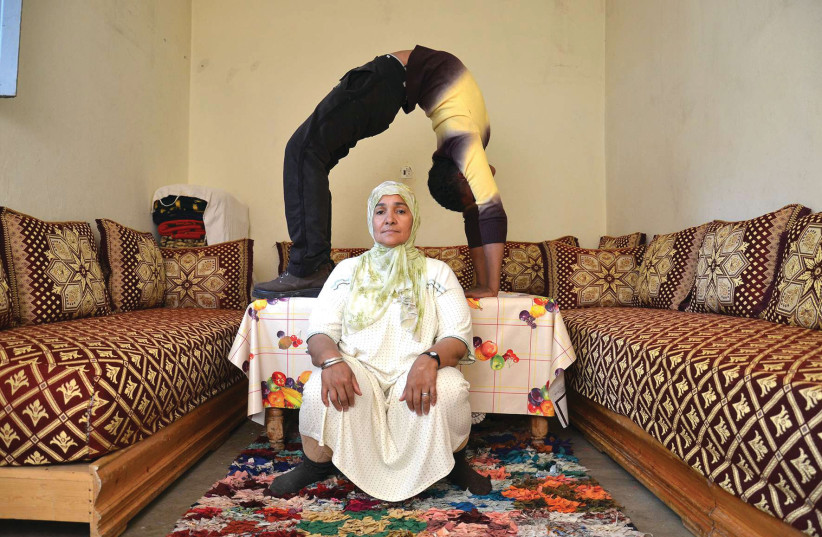Fancy a whistle-stop circuit of the Mediterranean?
OK, so “whistle-stop” might be a bit of an exaggeration, considering that the “Photomenta” exhibition package currently on show at the Eretz Israel Museum (Muza) in Tel Aviv encompasses in excess of 300 prints, and even a handful of video-sound creations.
Still, the panoply does feature works by artists from all points around the relevant body of water, and a visit to the Ramat Aviv arts and culture repository is a lot less COVID-19 constraint-related stressful – not to mention a far sight less expensive – than getting on a plane or two and jetting around the region.
All told, the offering features 35 photographers from 16 Mediterranean countries, including Turkey, Greece, Cyprus, Albania, Montenegro, Italy, France, Spain, Morocco, Malta, Israel, and also the Palestinian Authority.
With such a voluminous rollout the museum had to enlist all its resources to accommodate the spread assembled by the institution’s curator of photography, Guy Raz.
And there should be much more where this lot came from. Raz and the museum honchos planned the current showing as the inaugural installment of the “Photomenta” series which is due to take place every five years.
The quinquennial curtain-raiser, which opened on September 21 and is scheduled to run for a year, also celebrates a noteworthy local milestone.
“The first ‘Photomenta’ is presented as part of Muza’s 2021–2022 International Season, which marks the decennial of Tel Aviv’s nomination as a World City,” explains Dr. Debby Hershman, deputy director and chief curator at Large.
Hershman also notes the inclusive and harmonious nature of the photographic offering, and the core artistic discipline. “These exhibitions center on a dialogue between the local and the global, positioning local culture on the world map. Photography is the global visual language, and this season opens with photography exhibitions.”
THERE IS plenty to see, consider and enjoy in “Photomenta.”
In addition to the framed shots, each exhibition maintains a dialogue of sorts with its host pavilion.
In the Numismatics building, for example, there is a cabinet with coins from port cities all around the Mediterranean coastline.
That, Raz posits, offers the public a means of getting up close to the archaeological finds and the current pictorial display. “When people come here, they will see these coins and the photographs and video clips, and they will be able to identify the places around the region where the exhibits originate. They will be able to connect the past with the present.”
That’s a nifty trick and neat way to draw the cultural consumer into the museum’s everyday endeavor, while enhancing the viewing experience.
In fact, there are numerous hooks to the showing. The museum associates the exhibition moniker with various fields of interest and knowledge, such as photography, cartography, monuments, documentation, moments, mythology and the Mediterranean.
The temporal and cultural yin-and-yang element, says the curator, is a central theme, too. “Photomenta,” Raz says, is fueled by “mythological encounters in the cradle of civilization. The Mediterranean basin, which once served as a crossroads, continues today to form a cultural bridge between East and West – a bridge floating over different seas and people, conflicts and political borders.”
That is an endearing and sunny avenue of thought, and the exhibits reflect a multifarious take on what is, after all, a universal core. We are all camped around the same sea, although, naturally, there are local nuances that spice up life in the locale in question, and the mosaic portrayal thereof.
Raz feels there is a sonic layer to the display, which courses and pulses across all the various sections. Thus, the central topic of the “Photomenta” series opener is rhythm, which, it is stated, “refers to meter and rhythm in music, poetry and movement.”
“The choice of this theme frames every series of photographs, and the exhibition as a whole, as a form of visual poetry, which has its own rhythm,” the curator explains. “This selection of works raises the question of whether photographers in the Mediterranean basin share a unique photographic rhythm.”
Raz would like us to get on board the rhythmic train of thought. “Visitors to the exhibition are invited to hold up to their ear a metaphorical seashell, set off on a journey among its ports on an odyssey of sorts, and listen to the rhythm of ‘Photomenta.’”
There is so much to see, and feel, in the exhibition, as cultural baggage and personal sentiments convey diverse emotional palettes that, inter alia, take in longing, joy, sadness, mischief and downright insouciance.
Nadir Buçan’s “Under the Shadow of the Sun” series documents rural life in the Van province in eastern Turkey.
The 43-year-old Turkish photographer spent time in the region, soaking up the local vibes and capturing natural dynamics and insightful fragments of human ebb and flow.
“I traveled throughout this area for six years, documenting every moment of distress and beauty within the wild presence of nature,” he says. “One of the things that struck me was that the deep restlessness that is part of modern life is entirely absent in these villages.”
Now there’s something to ponder.
Nostalgia and parody combine in the “Trompe l’oei” (Optical Illusion) set by French-Tunisian photographer Faten Gaddes.
Gaddes placed her costumed subjects against a faded painted scenery taken from the studio of a photographer who worked in Tunis in the 1930s.
The artificial backdrop harks back to a time when people were looking to gain fleeting respite from the grim reality of their trying socioeconomic circumstances, and Gaddes was looking to offer her sitters a similar momentary escape route. The result is aesthetically compelling and entertaining.
Hicham Benohoud’s “Acrobatics” project should also raise a smile or two. His comedic oxymoronic shots present a Moroccan family living a traditional rural lifestyle while the younger members of the family gad about displaying remarkable feats of calisthenic agility. The interface of the mundaneness of a tried and tested existence, and the injection of irrepressible youthful zest makes for a sensorial treat.
But if it’s breadth of thematic emotivity you’re looking for, Letizia Battaglia has got them all beat. The Italian octogenarian’s section is called “Photography As A Life Choice,” which basically spells it all out. The title references both her philosophical standpoint and the range of topics she captures in her lens.
She is best known for her work on the Mafia, and some of her exhibits at the museum present the stark reality of her home patch. She also conveys the struggles of street-level life there, but also unfurls her whimsical side with some hilarious scenes of “common folk.”
It has been seven years since the subject of migrants risking life and limb, crossing the Mediterranean Sea in search of a better life, hit the news. Naturally, since the COVID-19 outbreak, that has been dropped from the front pages or just ignored. But Battaglia’s compatriot Maria Pansini brings that all back subtly and succinctly with her “Blanket” set.
And for sheer visual drama and cutting-edge aesthetics, Francesca Piqueras’s prints take the biscuit, or croissant. The French fine arts photographer’s contribution includes works from three series – “The Architecture of Silence” (2012), “Fort” (2014) and “Panic Point” from 2015. Stark beauty and neglect abound in her shots of wrecked ships and abandoned World War II defense bunkers.
Needless to say, if you want to take in as much of the striking exhibits as you can, a long stay at the museum, with the odd coffee break, is advised.
For more information: www.eretzmuseum.org.il

